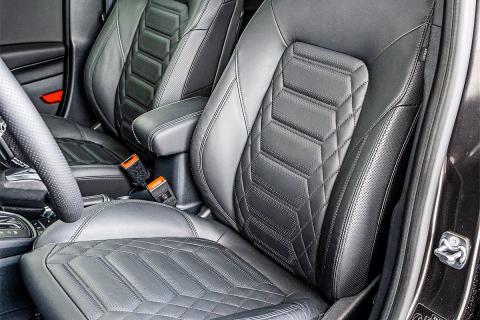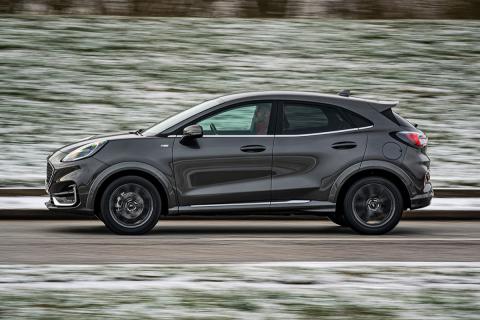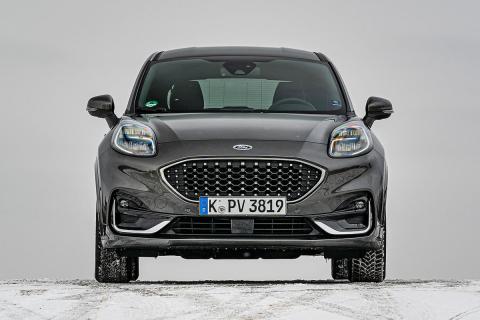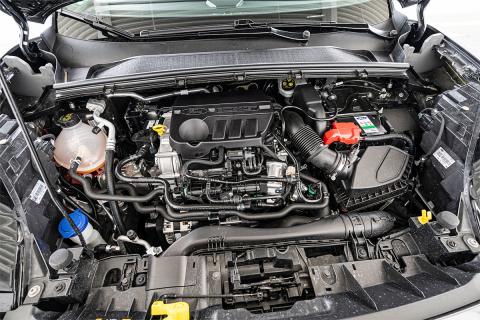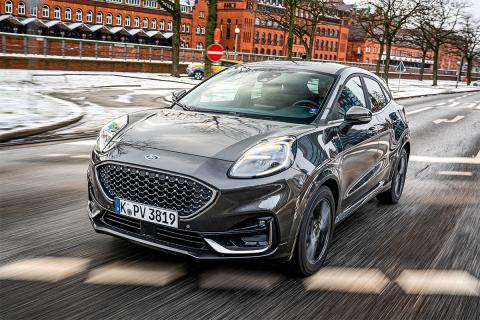
– Olaf Itrich / AUTOBILD
If you are thinking of buying a car, it is most likely that you are thinking of buying an SUV. It is logical, because it is fashionable and they are everywhere, but today we are going to weigh two options within the SUVs, which are not among the most common choices and with very different approaches: Ford Puma or Toyota bZ4x.
Design
Although they have very different designs, both are quite striking cut models that are out of the ordinary.
The Puma is one of the sportiest SUVs in its segment, with a quite muscular image thanks to its rounded shapes, the marked wheel arches and the bumper format. To this is added the fall of the roof, the spoiler and the diffuser, which reaffirm this general feeling.
The bZ4x, despite its size, conveys a rather athletic image. Its front is sharp, the body panels are well defined by the tension lines, the spoiler divided into two sections stands out and the design of the rear lights is also quite striking.
Dimensions
They belong to different segments, so they offer a very different format. The Puma falls under the category of B SUVs while the bZ4x is a compact SUV.
Starting with the American, it measures 4,207mm long, 1,805mm wide and 1,537mm tall, with a 2,588mm wheelbase. The Japanese, for its part, reaches a length of 4,690 mm, a width of 1,860 mm and a height of 1,650 mm, with a wheelbase of 2,850 mm.
Where there is surprise is in the trunk section, and it is that the Ford, despite being the smallest of the pair, has a capacity that exceeds that of its rival: 456 liters (401 in the microhybrid versions) for the 452 liters that your rival offers.
Engine offer
Here we find one of the differentiating factors between both models, because while the Ford maintains an offer of combustion engines with some electrification, the Toyota is 100% electric.
The bZ4x is marketed in two versions. The access one uses a single 204 hp (150 kW) engine and is front-wheel drive, while the upper one uses two blocks (each with 109 hp) together developing 218 hp and is all-wheel drive. Both share the same battery, 71.4 kWh, and have autonomy of 436 and 411 km, respectively.
The Ford has a conventional range made up of two variants, both equipped with MHEV technology and with the option of mounting a manual or automatic gearbox. There are two variants of the 1.0 EcoBoost engine, with 125 hp in the access version and 155 hp in the higher one.
Special mention must be made of the sporty Ford Puma ST, which mounts a 1.5 EcoBoost engine with 200 hp and 320 Nm, manual gearbox and is capable of accelerating from 0 to 100 km/h in 6.7 seconds.
Price
Here again, the bet of each vehicle is very uneven, because the Toyota bZ4x is not sold in Spain as such, but is offered exclusively in rental format, with an initial payment of almost 4,000 euros and a monthly fee that It reaches 699 euros in the case of the 4×4 variant.
The Puma, on the other hand, is marketed in a traditional format and is available from 23,449 euros, which goes up to 32,233 euros in the case of the ST variant.
What is the best option?
From everything we have discussed, it is very clear that they are two SUVs focused on quite diverse audiences, so, seeing the characteristics of one and the other, there should not be much doubt about which one to opt for.
The Ford Puma is a considerably cheaper option and with a sportier focus, but with smaller dimensions that make it go to the limit as a family car and that only has an ECO label in its range, an important factor.
The Toyota bZ4x, although it is an SUV, has more than remarkable off-road capabilities, despite its stylish design it is really spacious and the key is its electric nature, something that makes it advisable to opt for it only if you have a place to recharge.

